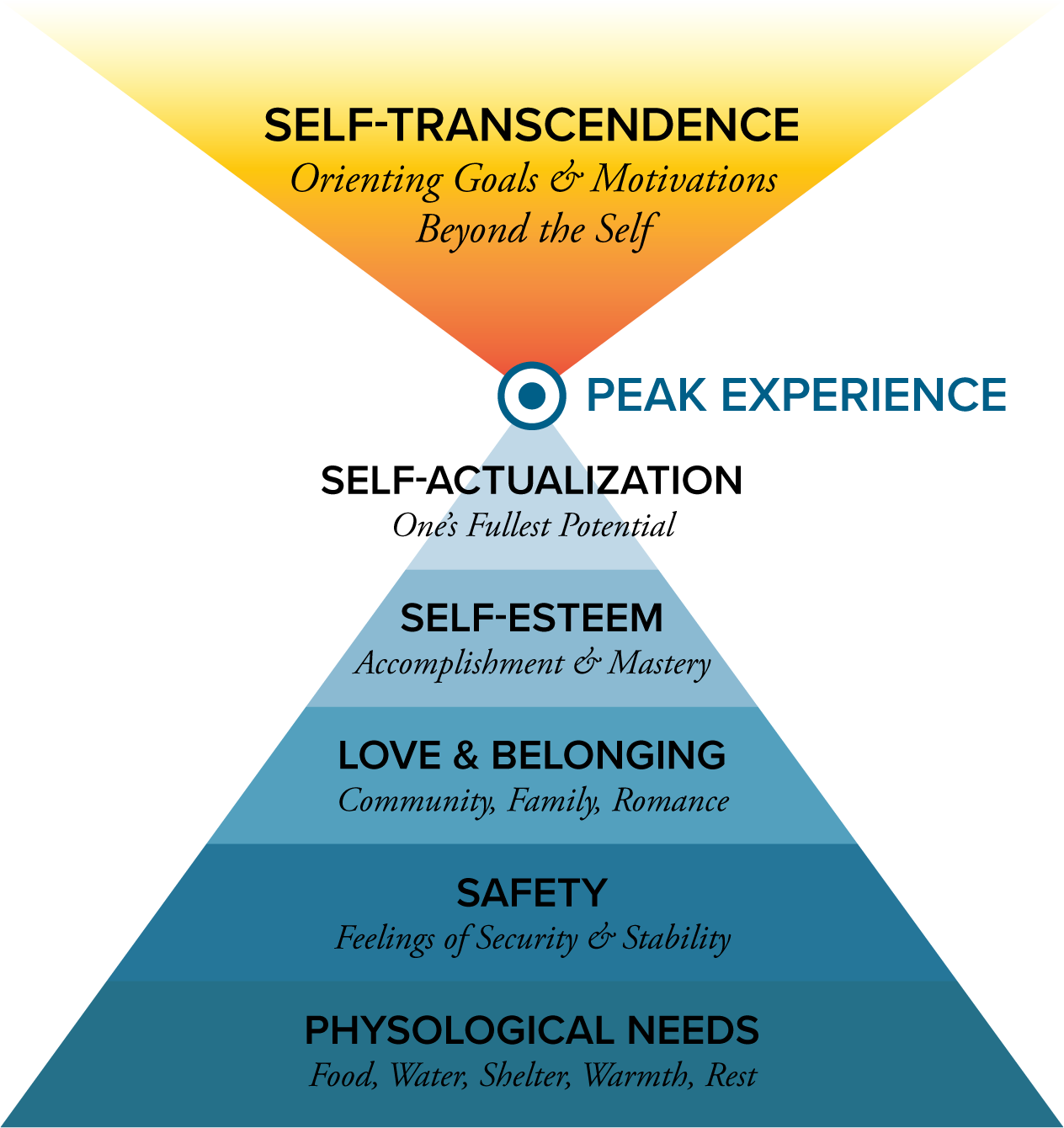Transcendence and awe: It’s not for everyone
Photo by Una Laurencic from Pexels
Long after after he developed his hierarchy of needs model, Abraham Maslow came to realize that there was another level he hadn’t addressed: self transcendence.
For Maslow, self transcendence was catalyzed by peak experiences, which help the individual transcend their own identity—leave behind self consciousness—and "fuse with the world...[just as] the mother feels one with her child." Maslow described the effect of the peak experience eloquently:
“Feelings of limitless horizons opening up to the vision…of being simultaneously more powerful and also more helpless…great ecstasy and wonder and awe, the loss of placing in time and space with, finally, the conviction that something extremely important and valuable had happened, so that the subject is to some extent transformed and strengthened even in his daily life.”
Traditional arts marketing tends to live in the zone of transcendence and awe. The Chicago Symphony, for example, describes its upcoming Coleridge-Taylor/Dvořák/Barber performance as “joyful,” “nostalgic,” and “rhapsodic.” The Philadelphia Symphony describes its upcoming Dvořák concert with phrases like “towering triumph” and “overwhelming tragic grandeur.” The San Francisco Symphony hails its upcoming Mozart/Schumann program as “timeless,” “refined,” and “sumptuous.”
It’s true that the feeling of awe—which often comes with a peak experience in nature or the arts; anything marked by vastness or novelty—can lead to a shift in perception, an opening or expansion that makes us feel as though we are part of something larger than ourselves and leads to a desire to connect with others. It’s a beautiful thing.
But what if your target audiences haven’t made it to the pinnacle of Maslow’s hierarchy of human need? What if your target audiences are currently prioritizing Belonging, or Self Esteem? What if the global pandemic has left them in the Safety zone?
Does this have implications for arts marketing?
“A peculiar characteristic of the human organism when it is dominated by a certain need,” wrote Maslow, “is that the whole philosophy of the future tends also to change. For our chronically and extremely hungry man, … life itself tends to be defined in terms of eating.”
Take, for example, the segment of your target audiences who are dealing with anxiety around covid; facing risk factors such as obesity or autoimmune conditions. They’re not prioritizing peak experiences or self transcendence. Their lives are defined in terms of safety and staying healthy. Will their interest be piqued by marketing that centers around language like “joyful,” “nostalgic,” “rhapsodic,” “timeless,” “refined,” and “sumptuous”?
Spoiler alert: I don’t think so. But there’s good news. Recent studies reveal that the benefits of a peak experience don’t end at self transcendence. Science tells us that awe increases pro-social behavior and has an integral part to play in health and happiness. In fact, people who report experiencing awe regularly have remarkably stronger immune systems and better mental health.
Research tells us that music, for instance, is incredibly beneficial for one’s health. Listening to music can can reduce anxiety, decrease blood pressure and cortisol, and help with pain management as well as improve sleep quality, mood, mental alertness, and memory. It sounds to me like insurance companies should start reimbursing their customers for performing arts tickets! (Doctors in Belgium have had the same idea.)
Why aren’t arts organizations touting these benefits?
“Come for the classical music; stay for the lowered levels of inflammatory cytokines!”
We chuckle at this imaginary tagline, but I’m confident that there are swaths of consumers who would be intrigued by this value proposition. What would that ad look like?
Ok, so that’s a bit tongue-in-cheek, but you get the idea.
Another benefit of experiencing awe is the cultivation of curiosity, which scientists say may boost self-efficacy, work ethic, and academic/work performance. Data also suggests that an awe-inspiring experience may be linked to willingness to take more risk and increased comfort with uncertainty. Perhaps certain businesses who are looking to cultivate risk-taking and self-efficacy might be convinced to buy their employees season tickets to the local symphony or opera company?
Again, not a finished product. But you get my point.
If you’ve read my blog for a while, you’ll know what’s coming next.
Great marketing isn’t about promoting the features of your organization or its products. Great marketing happens when you promote the benefits of engaging with your products.
Because all consumers really want to know is how they will be transformed by the experience. And not all of your audiences are in the market for transcendence. In fact, not all of your audiences are there for your art. Many have “hired” your art to help them make progress on a seemingly unrelated need in their life—like the young millennial couple who is tired of noisy bars and wants a more sophisticated night out.
And when your marketing team makes the shift from promoting your art to helping consumers with their needs, you’ll begin to see your target market expand dramatically. It’s time for your arts organization to have its own self-transcendent moment!




